Contents
1 Introduction
1.1 What is INET Framework
1.2 About the documentation
1.3 Contents of this Manual
2 Using the INET Framework
2.1 Installation
2.2 INET as an OMNeT++-based simulation framework
2.3 Creating and Running Simulations
2.4 Result Collection and Analysis
2.5 Setting up wired network simulations
2.5.1 Modeling Link and Node Failures
2.5.2 Specifying IP (IPv6) addresses in module parameters
2.6 Setting up wireless network simulations
2.7 Setting up ad-hoc network simulations
2.8 Emulation
2.9 Packet traces
2.10 Developing New Protocols
3 Node Architecture
3.1 Overview
3.2 Addresses
3.3 The Notification Board
3.4 The Interface Table
3.4.1 Accessing the Interface Table
3.4.2 Interface Entries
3.4.3 Interface Registration
3.4.4 Interface Change Notifications
3.5 Initialization Stages
3.6 Communication between protocol layers
3.7 Publish-Subscribe Communication within Nodes
3.8 Network interfaces
3.9 The wireless infrastructure
3.10 NED Conventions
3.10.1 The @node Property
3.10.2 The @labels Module Property
3.10.3 The @labels Gate Property
4 Point-to-Point Links
4.1 Overview
4.2 PPP frames
4.3 PPP module
4.4 PPPInterface module
5 The Ethernet Model
5.1 Overview
5.1.1 Implemented Standards
5.2 Physical layer
5.2.1 EtherBus
5.2.2 EtherHub
5.3 MAC layer
5.3.1 EtherMACFullDuplex
5.3.2 EtherMAC
5.4 Switches
5.4.1 MAC relay units
5.4.2 EtherSwitch
5.5 Link Layer Control
5.5.1 Frame types
5.5.2 EtherEncap
5.5.3 EtherLLC
5.5.4 EthernetInterface module
5.6 Ethernet applications
5.7 Ethernet networks
5.7.1 LargeNet model
6 The Radio Infrastructure
6.1 Overview
7 The 802.11 Model
7.1 Overview
7.1.1 Limitations
8 Node Mobility
8.1 Overview
8.2 Mobility in INET
8.2.1 MobilityBase class
8.2.2 MovingMobilityBase
8.2.3 LineSegmentsMobilityBase
8.3 Implemented models
8.3.1 Deterministic movements
8.3.2 Random movements
8.3.3 Replaying trace files
8.4 Mobility scripts
9 IPv4
9.1 Overview
9.1.1 INET modules
9.2 The IPv4 Module
9.2.1 IP packets
9.2.2 Interface with higher layer
9.2.3 Routing, and interfacing with lower layers
9.2.4 Parameters
9.2.5 Statistics
9.3 The RoutingTable module
9.4 The ICMP module
9.5 The ARP module
9.6 The IGMP module
9.6.1 Host behaviour
9.6.2 Router behaviour
9.6.3 Disabling IGMP
9.6.4 Parameters
9.7 The NetworkLayer module
9.8 The NetworkInfo module
9.9 Configuring IPv4 networks
9.9.1 IPv4NetworkConfigurator
9.9.2 FlatNetworkConfigurator
9.9.3 Old routing files
9.10 Applications
9.10.1 IP traffic generators
9.10.2 The PingApp application
10 IPv6 and Mobile IPv6
10.1 Overview
11 The UDP Model
11.1 Overview
11.2 The UDP module
11.2.1 Sending UDP datagrams
11.2.2 Receiving UDP datagrams
11.2.3 Signals
11.3 UDP sockets
11.4 UDP applications
11.4.1 UDPBasicApp
11.4.2 UDPSink
11.4.3 UDPEchoApp
11.4.4 UDPVideoStreamCli
11.4.5 UDPVideoStreamSvr
11.4.6 UDPBasicBurst
12 The TCP Models
12.1 Overview
12.1.1 TCP segments
12.1.2 TCP connections
12.1.3 Flow control
12.1.4 Transmission policies
12.1.5 Congestion control
12.2 TCP module
12.2.1 TCP packets
12.2.2 TCP commands
12.2.3 TCP parameters
12.2.4 Statistics
12.3 TCP connections
12.3.1 Data transfer modes
12.3.2 Opening connections
12.3.3 Sending Data
12.3.4 Receiving Data
12.3.5 RESET handling
12.3.6 Closing connections
12.3.7 Aborting connections
12.3.8 Status Requests
12.4 TCP algorithms
12.4.1 DumbTCP
12.4.2 TCPBaseAlg
12.4.3 TCPNoCongestion
12.4.4 TCPTahoe
12.4.5 TCPReno
12.4.6 TCPNewReno
12.5 TCP socket
12.6 Other TCP implementations
12.6.1 TCP LWIP
12.6.2 TCP NSC
12.7 TCP applications
12.7.1 TCPBasicClientApp
12.7.2 TCPSinkApp
12.7.3 TCPGenericSrvApp
12.7.4 TCPEchoApp
12.7.5 TCPSessionApp
12.7.6 TelnetApp
12.7.7 TCPSrvHostApp
13 The SCTP Model
13.1 Overview
14 Internet Routing
14.1 Overview
15 Differentiated Services
15.1 Overview
15.1.1 Implemented Standards
15.2 Architecture of NICs
15.2.1 Traffic Conditioners
15.2.2 Output Queues
15.3 Simple modules
15.3.1 Queues
15.3.2 Droppers
15.3.3 Schedulers
15.3.4 Classifiers
15.3.5 Meters
15.3.6 Markers
15.4 Compound modules
15.4.1 AFxyQueue
15.4.2 DiffservQeueue
15.5 Examples
15.5.1 Simple domain example
15.5.2 One domain example
16 The MPLS Models
16.1 Overview
16.2 MPLS/RSVP/LDP Model - Implemented Standards
16.3 MPLS Operation
16.4 LDP Message Processing
16.4.1 Label Request Message processing
16.4.2 Label Mapping Message processing
16.5 LIB Table File Format
16.6 The CSPF Algorithm
16.7 The traffic.xml file
17 Applications
17.1 Overview
18 History
18.1 IPSuite to INET Framework (2000-2006)
References
Index
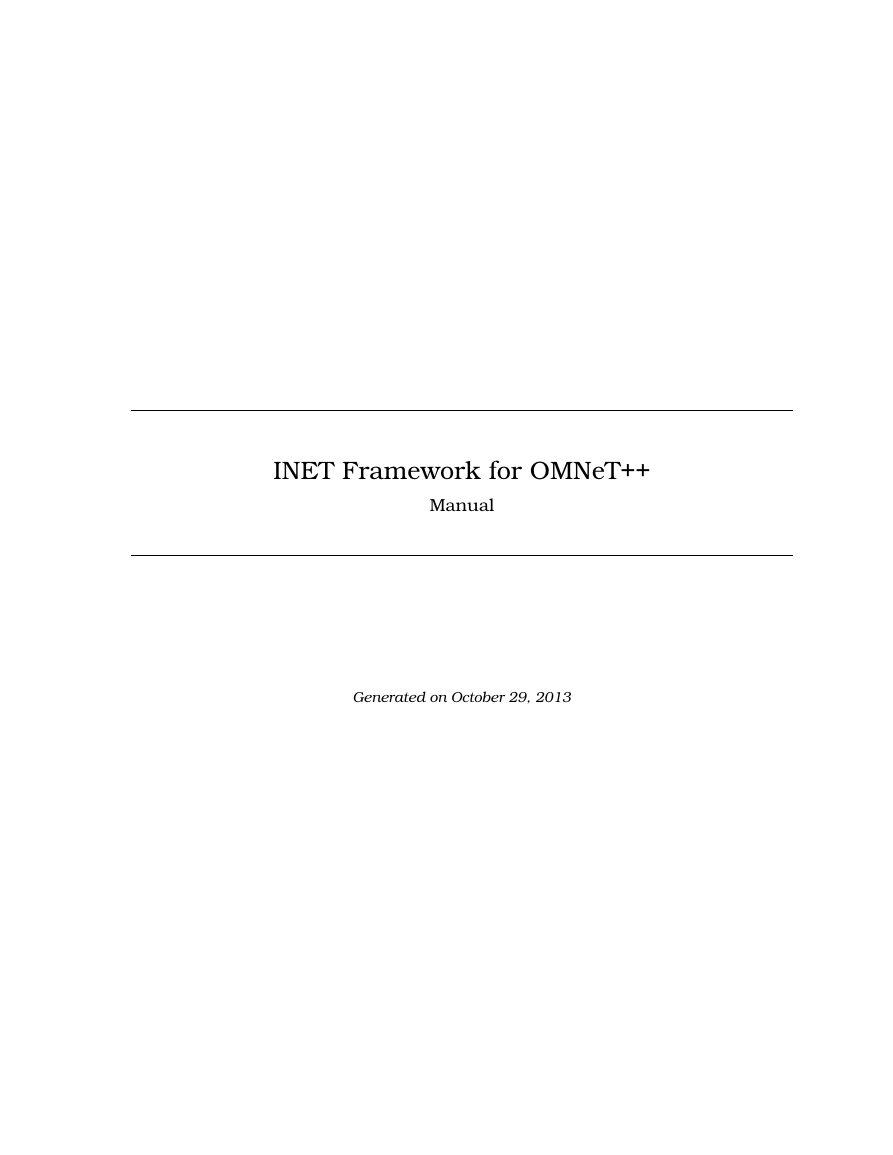

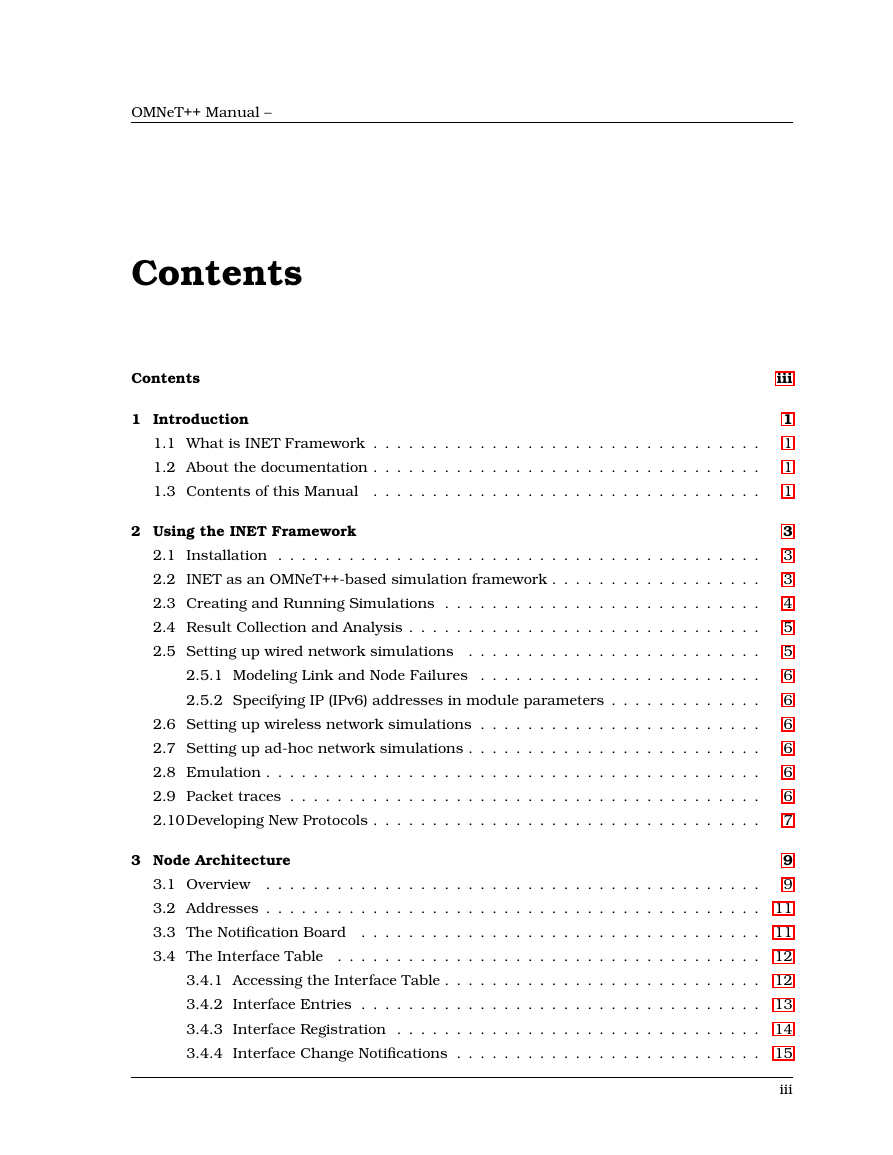
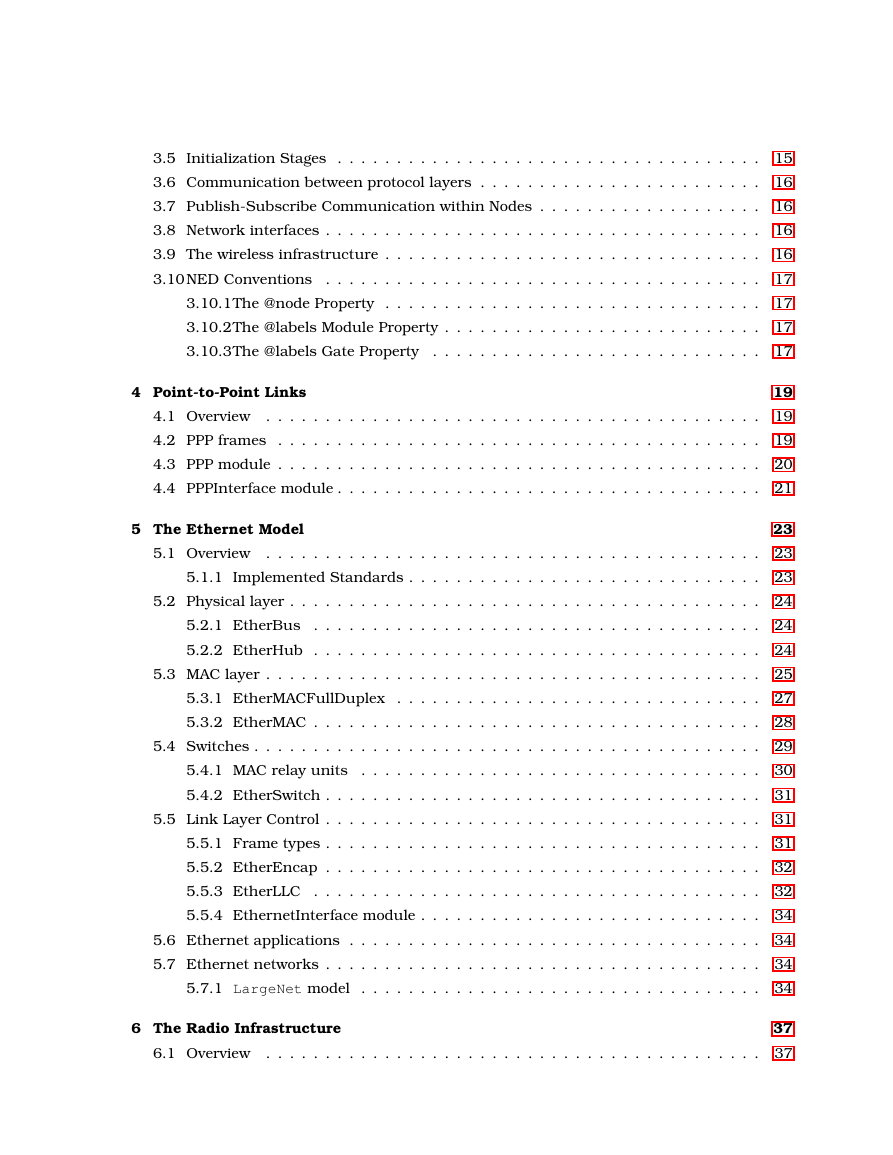
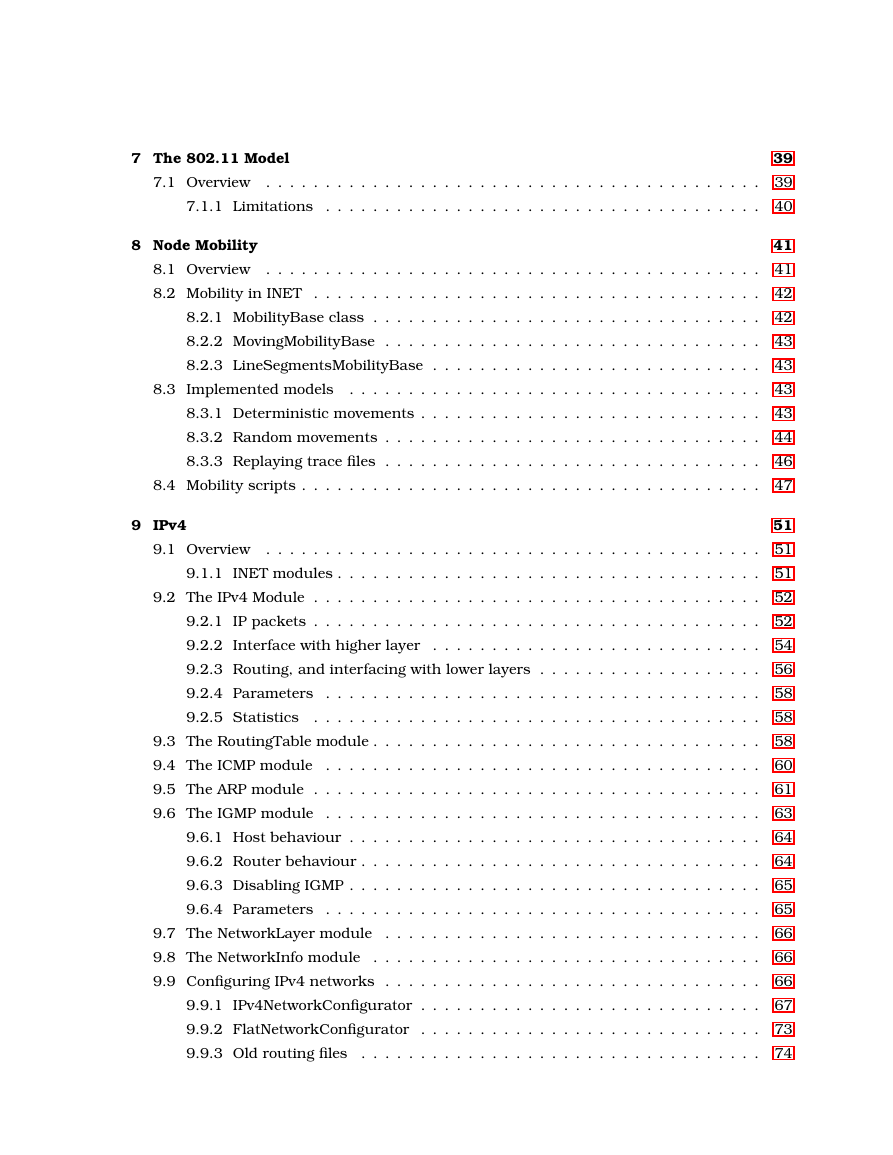
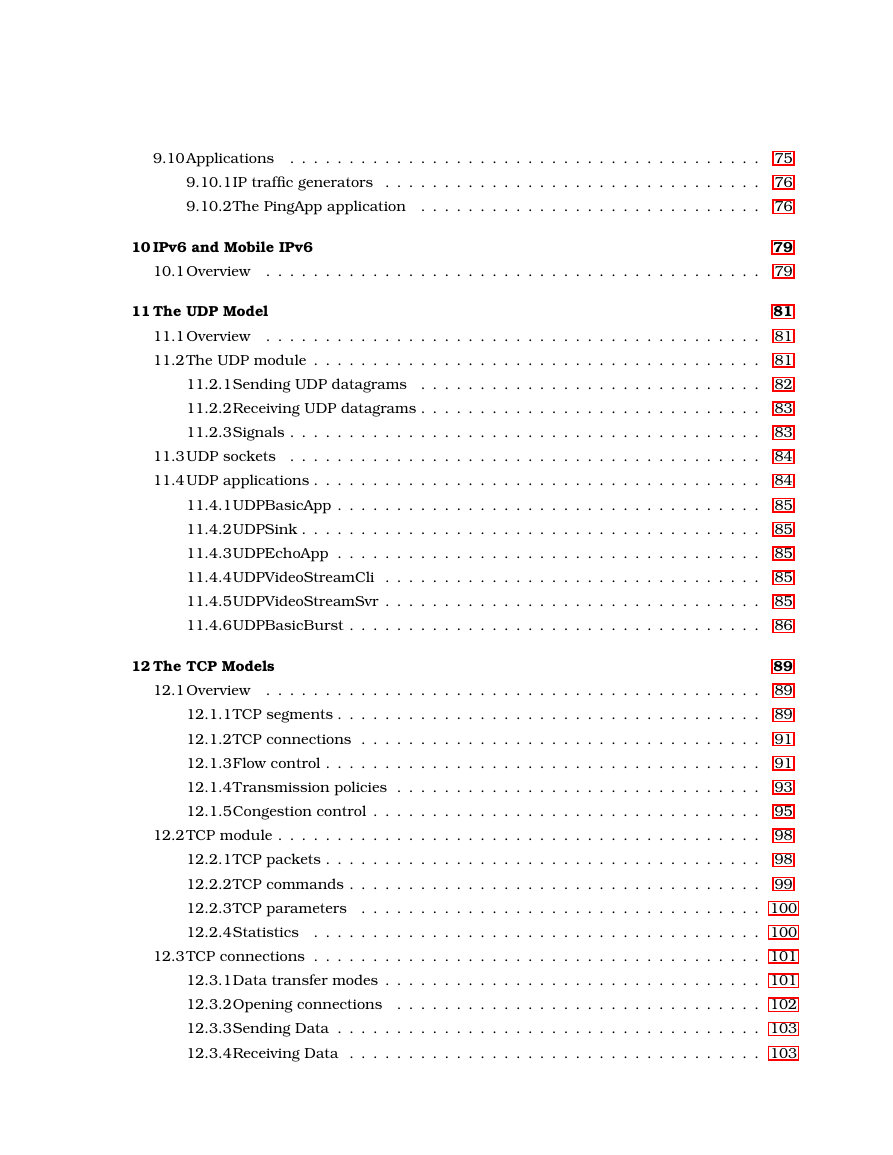
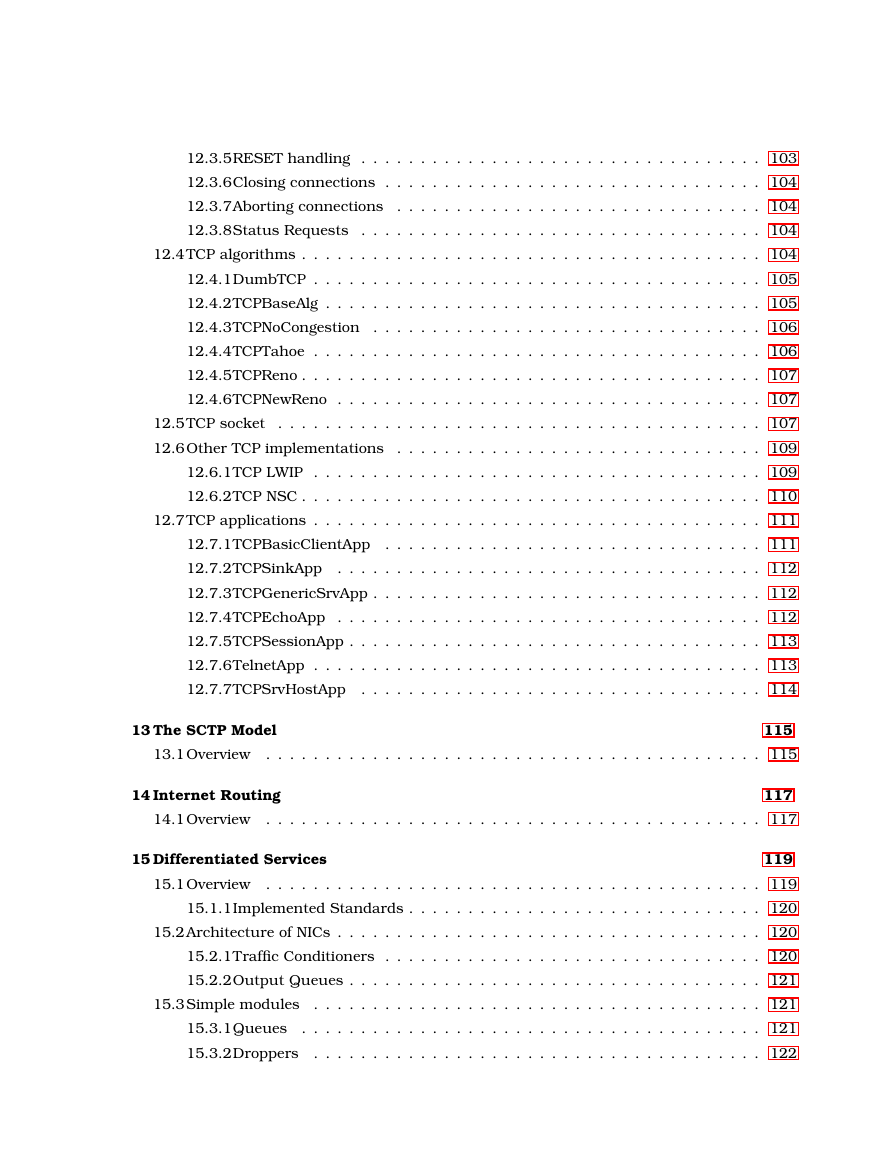
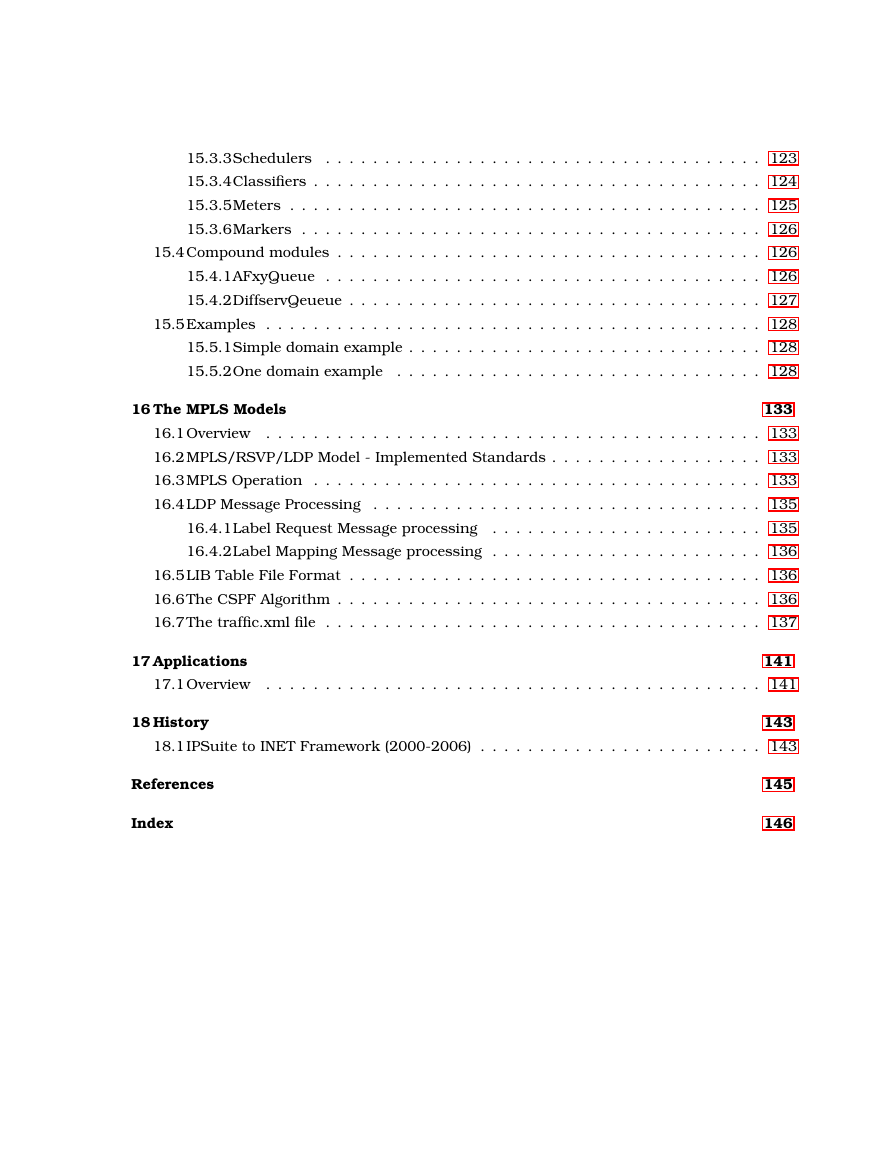








 2023年江西萍乡中考道德与法治真题及答案.doc
2023年江西萍乡中考道德与法治真题及答案.doc 2012年重庆南川中考生物真题及答案.doc
2012年重庆南川中考生物真题及答案.doc 2013年江西师范大学地理学综合及文艺理论基础考研真题.doc
2013年江西师范大学地理学综合及文艺理论基础考研真题.doc 2020年四川甘孜小升初语文真题及答案I卷.doc
2020年四川甘孜小升初语文真题及答案I卷.doc 2020年注册岩土工程师专业基础考试真题及答案.doc
2020年注册岩土工程师专业基础考试真题及答案.doc 2023-2024学年福建省厦门市九年级上学期数学月考试题及答案.doc
2023-2024学年福建省厦门市九年级上学期数学月考试题及答案.doc 2021-2022学年辽宁省沈阳市大东区九年级上学期语文期末试题及答案.doc
2021-2022学年辽宁省沈阳市大东区九年级上学期语文期末试题及答案.doc 2022-2023学年北京东城区初三第一学期物理期末试卷及答案.doc
2022-2023学年北京东城区初三第一学期物理期末试卷及答案.doc 2018上半年江西教师资格初中地理学科知识与教学能力真题及答案.doc
2018上半年江西教师资格初中地理学科知识与教学能力真题及答案.doc 2012年河北国家公务员申论考试真题及答案-省级.doc
2012年河北国家公务员申论考试真题及答案-省级.doc 2020-2021学年江苏省扬州市江都区邵樊片九年级上学期数学第一次质量检测试题及答案.doc
2020-2021学年江苏省扬州市江都区邵樊片九年级上学期数学第一次质量检测试题及答案.doc 2022下半年黑龙江教师资格证中学综合素质真题及答案.doc
2022下半年黑龙江教师资格证中学综合素质真题及答案.doc